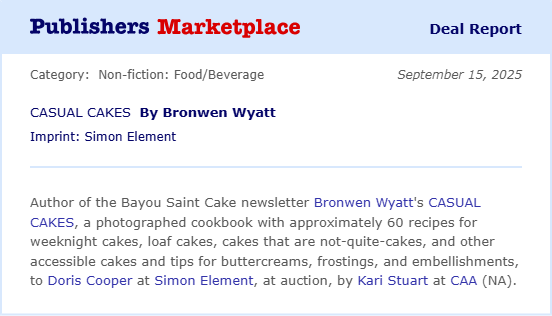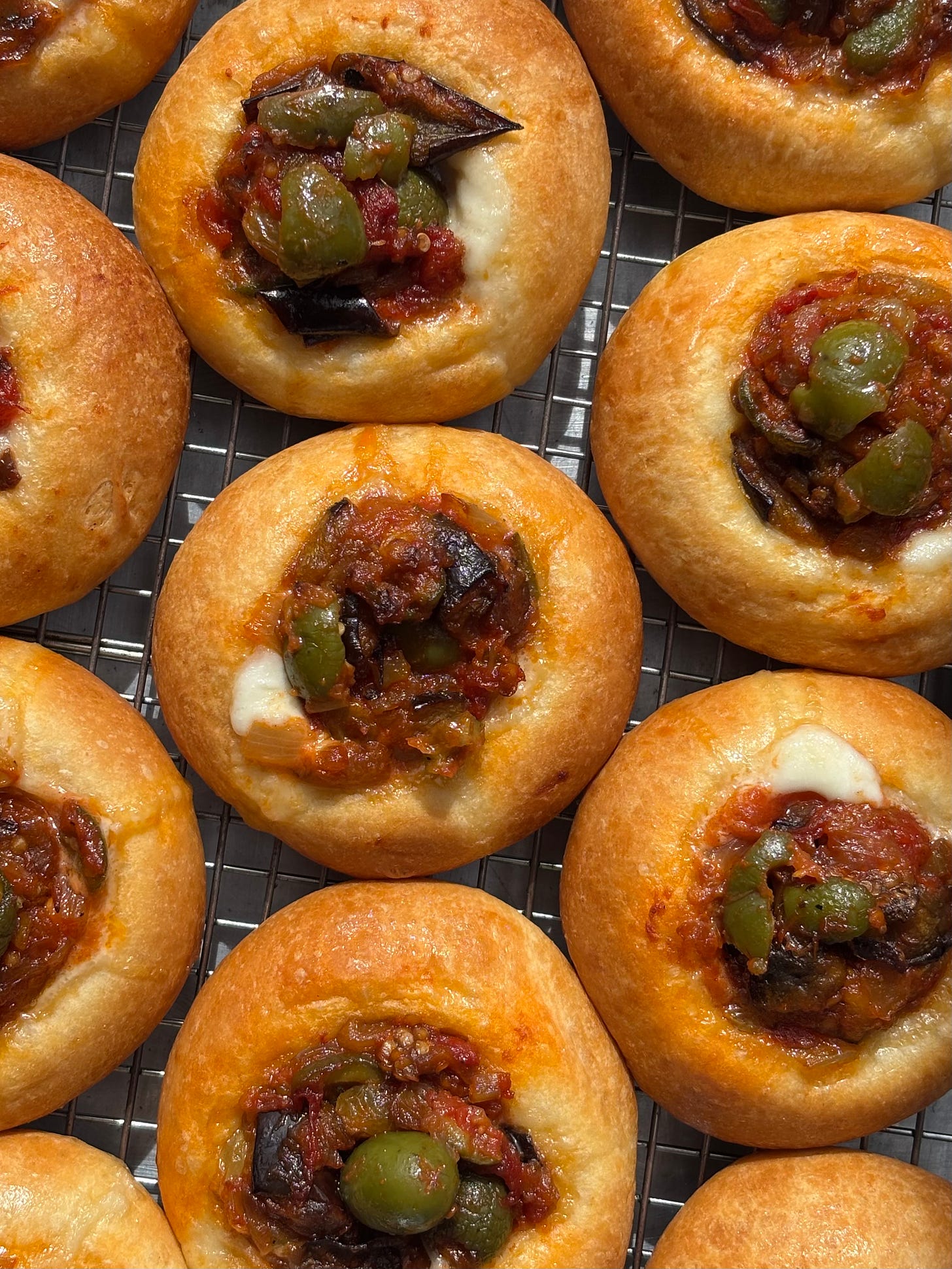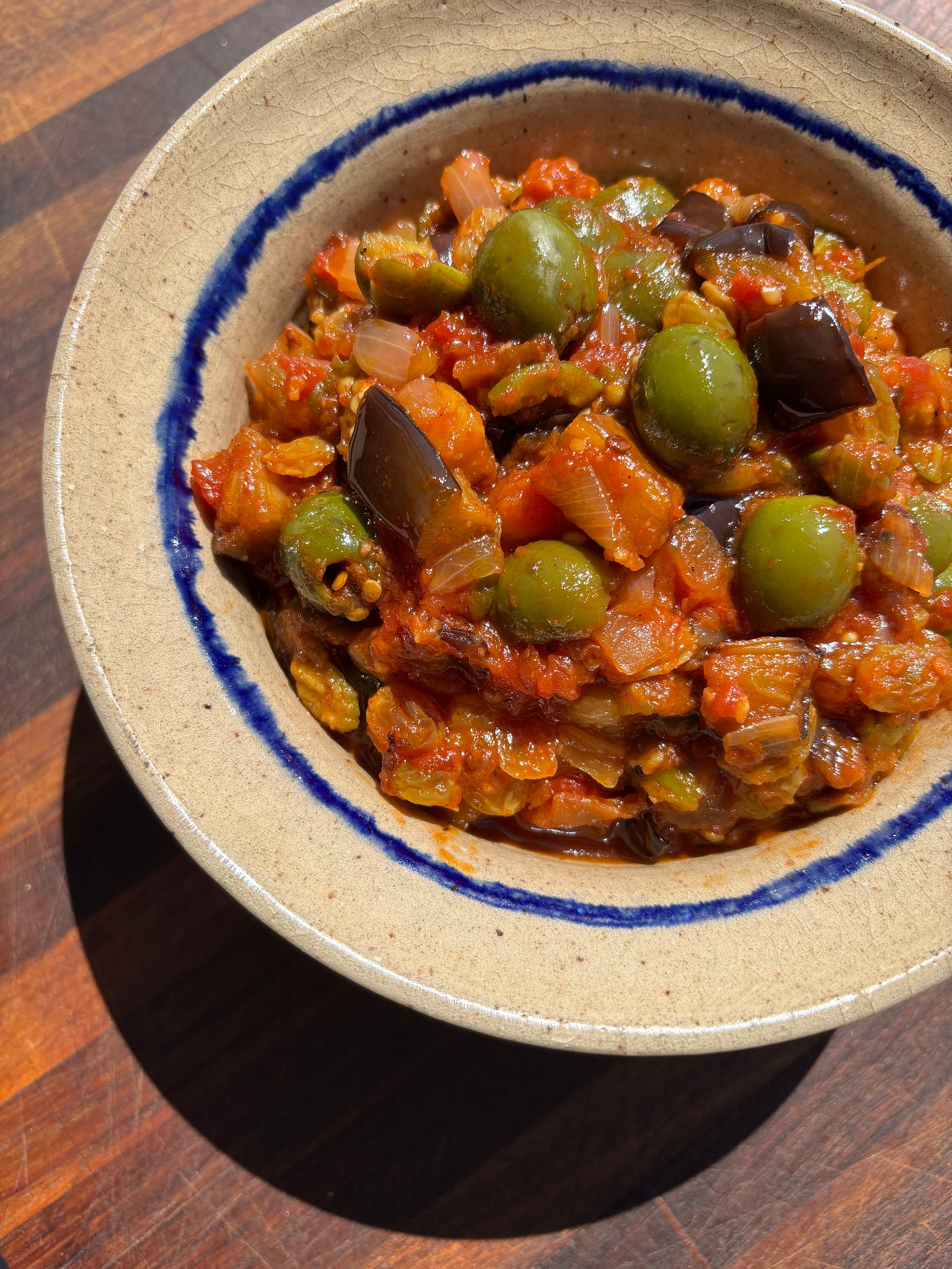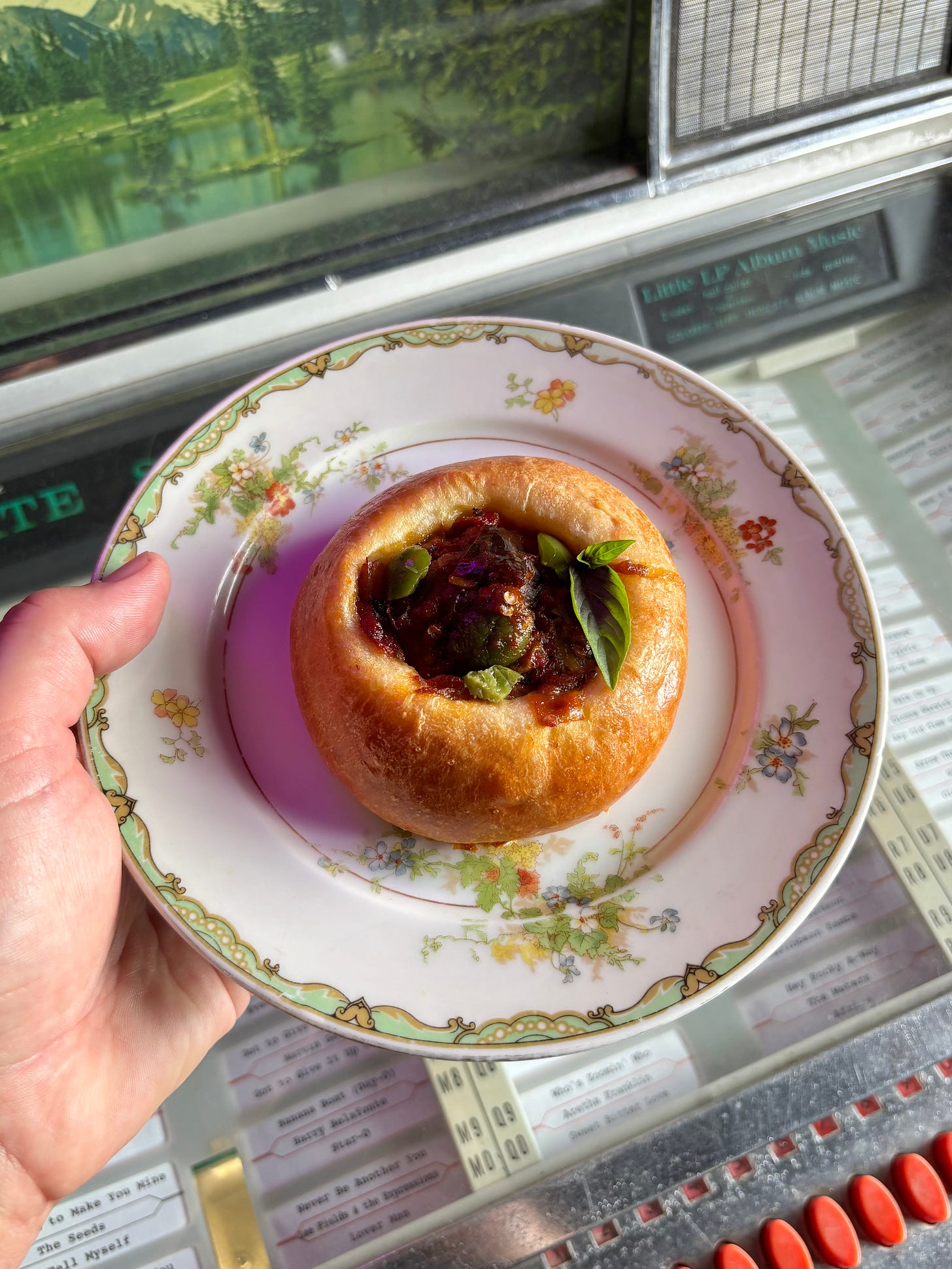Hello! It’s nearly November! In New Orleans that means that summer weather is still unfurling its tendrils into the autumn months. Tomorrow we will have our first high temp of the season under 80 degrees. I have a new-to-me pumpkin variety set aside to roast in my kitchen about it. I’m working on an essay about whole grain flour and a new Thanksgiving pie recipe (do we need another one? Perhaps not!). Through all of this, I am simultaneously developing recipes at a speed and volume I’ve never attempted before. In case you missed it, I’m working on a book! It’s due to come out in Spring 2027 (so close! so far!).
I’m actually quite a slow recipe developer. In my restaurant days I might fiddle with a new dessert for two weeks before putting it on the menu, even if I was incorporating recipe elements I’d already mastered. This feels like an oddly embarrassing confession in an era where new recipes come at us at ever more breakneck speed. I’ve also learned that exhilarating high of nailing a recipe in one take, which has happened to me exactly twice through this process. Only twenty-odd more recipes to go!
Below I’ve got a sponsored recipe for you that took more than one take! But I love the results, and now I’ve still got a stash of caponata kolache in my freezer to pull out as impromptu writing snacks as I wind my way to the finish line. Eat kolache, they will fuel your creative exploits!
Content below sponsored by California Canned Olives.
Caponata Kolache with California Canned Green Olives
I don’t get to flex my savory baking muscles often, which is why I’m especially stoked to present this recipe to you today! Kolache are round, yeasted buns that can feature either sweet or savory fillings, and while they originate in the Czech Republic, they’ve taken on a life of their own in East and Central Texas. You can find both mom-and-pop and chain stores dedicated to fruit-filled or sausage kolaches all through this part of the lone star state. I’ve given my version a Sicilian spin, filling them with one of my favorite Italian condiments, sweet-and-sour caponata. My caponata features deeply roasted eggplant with onion, tomato, celery, golden raisins, and buttery green canned olives from California. Canned California green olives are milder and sweeter than other types of olives, bringing an approachable salinity and delicate flavor to the caponata. I use whole, pitted olives here to bring lots of olive flavor to every bite.
The caponata recipe makes more than you’ll need to fill the kolache, which is fine by me since I’ll serve the extra on pasta or freeze it for an easy bruschetta topping next time I’m hosting friends. I’ll be bringing these caponata kolache to tailgate at my bocce league meetups all through October!
Both the kolache dough and the caponata benefit from an overnight rest, so if you can swing it, start this process the day before you hope to serve them.
Caponata Kolache with California Canned Green Olives
Makes 14 kolache
For the caponata:
1 large eggplant, about 1 lb / 454 grams, cut into ½ inch cubes
¼ cup plus two tablespoons / 90 grams olive oil
1 large sweet onion, diced
Two tender inner ribs of celery, diced
1 tablespoon tomato paste
4 cloves garlic, minced
1 tablespoon tomato paste
1 14-ounce can crushed tomatoes
1 14-ounce can California whole, pitted, green olives, drained
¾ cup / 100 grams golden raisins
2 tablespoons / 26 grams brown sugar
3 tablespoons / 45 gram red wine vinegar
Salt and red pepper flake, to taste
Preheat the oven to 450°F.
Toss the cubed eggplant in two tablespoons of olive oil and a hefty pinch of salt. Lay out on a greased sheet tray and roast in the preheated oven for 20 minutes, or until it has just begun to turn golden brown at the corners.
While the eggplant is roasting, add the diced onion to a large, non-reactive pot with the remaining olive oil. Cook over medium heat, stirring occasionally, until the onion is just beginning to turn golden at the edges and is fragrant, about ten minutes. Add the celery and cook for a few minutes more, until the celery is just beginning to soften. Then, add the tomato paste and the minced garlic and cook until the garlic is very fragrant and the tomato paste has just begun to caramelize, 2-3 minutes. Add the can of tomatoes, the olives, the golden raisins, and the roasted eggplant, and stir until everything is well coated before finally adding the red wine vinegar and the brown sugar. Taste the caponata and add salt and red pepper flakes to taste. Lower the heat and let it simmer and meld for another twenty minutes, stirring occasionally. Let cool to room temperature before storing in the fridge overnight. The caponata can be kept, covered and refrigerated, for up to four days. The flavor often improves as it sits.
For the kolache dough:
Note: The milk powder in this kolache dough helps keep the dough extra soft and fluffy, but you can omit if you don’t have it on hand. If you don’t have a dough hook, use the paddle attachment. The dough may not clear the sides of the bowl, but it will still come together.
2 ¾ cups / 330 grams all purpose flour
¼ cup / 50 grams sugar
2 tablespoons / 16 grams dried milk powder
One packet / 2 ¼ teaspoons / 7 grams instant yeast
1 ½ teaspoons kosher salt
½ cup / 120 grams whole milk, gently warmed to around 100°F
6 tablespoons / 85 grams butter, melted
2 tablespoons / 30 grams olive oil
2 eggs, large
Combine the flour, sugar, dried milk powder, instant yeast, and salt in the bowl of a stand mixer and give it a whisk to combine. Combine the warm milk, melted butter, and olive oil, and add them to the dry ingredients. Crack the eggs and add them to the stand mixer. Beat together all the ingredients with a wooden spoon until a soft dough forms. With the dough hook attachment, knead the dough on medium speed (speed 4) for 5-6 minutes, until it has cleared the sides of the bowl and looks smooth and elastic. Scrape the dough onto your counter and form it into a ball. Place the dough into a greased bowl, cover, then refrigerate overnight (or for at least two hours).
To assemble the kolache:
Note: if you’d like to add a cheese element to your kolache, you can tuck balls of fresh mozzarella under the caponata - you’ll need 14. You could also use goat cheese or a thick, strained ricotta beaten with an egg yolk.
14 small, fresh balls of mozzarella
1 egg, for egg wash
Minced or torn basil or parsley, olive oil, or crushed California green olives for garnish, optional
Remove the chilled dough from the refrigerator. Portion the dough into 14 pieces (about 50 grams each) and roll them into balls, tucking the ends under. Let the balls rest on your counter for one or two minutes to relax, then place them onto two parchment-lined sheet trays, flattening them gently with the heel of your hand until they resemble discs. Mist them with oil spray, then cover them with plastic wrap or a clean cloth. Set aside for 45 minutes to an hour, or until they have risen. They’ll look quite puffy, and if you poke the center with your finger the indent will remain.
While the dough is rising, remove the caponata from the refrigerator and taste, adjusting the seasoning as necessary. Make the egg wash by beating the egg with a pinch of salt and a few tablespoons of water.
Preheat the oven to 350°F.
When the dough has risen, grease the base of a small drinking glass, like a juice glass, that has a diameter of about two inches. Use the glass to make an indentation in the center of each kolache (you can also use greased fingers). You may need to re-grease the glass if it starts to stick. With a soft pastry brush, brush the entire surface of the kolache with egg wash. Place a mozzarella ball in each indentation. Cover it with about two tablespoons of caponata.
Bake the kolache in the preheated oven for 25-28 minutes, rotating the trays from top to bottom and front to back at 15 minutes. The kolache are done when they are an even golden brown. Once removed from the oven, use an offset spatula to place the kolache on a wire rack to cool completely.
The kolache can be garnished with a drizzle of olive oil, a few crushed green olives, or diced parsley or basil. They are best the day they are made, though leftovers can be frozen and then toasted to bring them back to life (I have stash in my freezer now for quick lunches).







I hope to find some wholemeal recipes in the new baking book, and with reduced sugar as well. Would be more interesting for people with diabetes, because they still like to eat cake.
Meantime I can just imaging how great your recipes are;-)
Big yes to savory kolaches!!